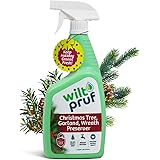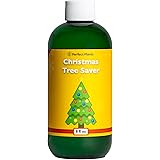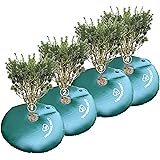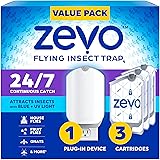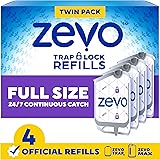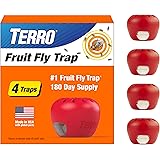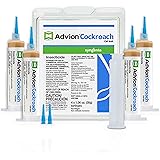The Maidenhair Fern, with its delicate, fan-shaped fronds and wiry black stems, is a plant of ethereal beauty. Coveted for its elegance, it adds a touch of sophistication to any indoor space. However, this beauty comes with a reputation: maidenhair ferns are notoriously finicky. Many a plant parent has lamented the sudden demise of their once-thriving fern.
But fear not! With the right knowledge and care, you can cultivate a flourishing maidenhair fern and enjoy its verdant charm for years to come. This comprehensive guide, updated for 2025, will equip you with all the tips and tricks you need to succeed, including insights into current trends, recent research, and evolving best practices.
Understanding the Maidenhair Fern
Before diving into the specifics of care, let’s understand what makes the maidenhair fern unique. Belonging to the genus Adiantum, these ferns are found in moist, shady environments around the world. They’re known for their distinctive foliage and their preference for high humidity, mimicking their natural habitat.
Different Types of Maidenhair Ferns
While Adiantum is the genus, several species and cultivars exist, each with slightly different characteristics. Knowing which type you have can influence your care approach.
- Adiantum raddianum (Delta Maidenhair Fern): Perhaps the most common type, featuring triangular fronds and a bushy appearance.
- Adiantum capillus-veneris (Southern Maidenhair Fern): Known for its delicate, lacy fronds and tolerance for slightly drier conditions compared to other species. This is the most well-known variety and one that is often found growing natively in temperate climates with suitable conditions.
- Adiantum peruvianum (Silver Dollar Maidenhair Fern): Distinguished by its large, round fronds with a silvery sheen when young. This fern requires consistent moisture.
- Adiantum hispidulum (Rough Maidenhair Fern): Characterized by its coarser texture and slightly hairy stems. It’s also more tolerant of less-than-ideal conditions.
- Adiantum venustum (Himalayan Maidenhair Fern): A smaller, more compact variety ideal for terrariums or smaller spaces. It thrives in cool, humid conditions.
2025 Trend Alert: Miniature and rare Adiantum varieties are becoming increasingly popular among collectors. Expect to see more specialty nurseries offering unique cultivars online and at plant shows.
Essential Care Tips for Maidenhair Ferns
Caring for a maidenhair fern involves mastering a few key elements: light, humidity, watering, soil, and temperature. Let’s explore each in detail.

delicate fern care
Light: Finding the Sweet Spot
Maidenhair ferns thrive in bright, indirect light. Direct sunlight will scorch their delicate fronds, causing them to turn brown and crispy. Think of the dappled sunlight they receive under the canopy of a forest.
- Ideal Light Conditions: Place your fern near a north-facing window or in a location that receives filtered light. East-facing windows can also work, but be mindful of the intensity of the morning sun.
- Signs of Insufficient Light: Leggy growth (long, stretched stems) and pale fronds indicate that your fern isn’t getting enough light. Move it to a brighter location, but avoid direct sun.
- Signs of Excessive Light: Brown, crispy fronds are a telltale sign of too much direct sunlight. Move your fern to a shadier spot.
Real-World Example: Sarah, a plant enthusiast in Seattle, struggled to keep her maidenhair fern alive until she moved it from a south-facing window to a corner with indirect light. The difference was dramatic; the fern perked up within days.
Humidity: The Key to Success
Humidity is arguably the most critical factor in maidenhair fern care. These ferns crave high humidity levels, ideally between 60% and 80%. Dry air is their nemesis.
- Increasing Humidity:
- Humidifier: The most effective method is to use a humidifier, especially during the winter months when indoor air tends to be dry.
- Pebble Tray: Place your fern on a tray filled with pebbles and water. As the water evaporates, it increases the humidity around the plant. Make sure the pot isn’t sitting in the water, only above it.
- Grouping Plants: Grouping plants together creates a microclimate with higher humidity. Plants naturally transpire, releasing moisture into the air.
- Misting: While misting can provide temporary relief, it’s not a long-term solution. Mist frequently throughout the day, using distilled or filtered water to avoid mineral buildup on the fronds.
- Terrarium: Growing your maidenhair fern in a terrarium is an excellent way to maintain high humidity. Choose an open terrarium to allow for some air circulation.
- Monitoring Humidity: Use a hygrometer to monitor the humidity level around your fern. This will help you adjust your methods as needed.
Statistics (2025): Recent studies show that homes using humidifiers experience a 20% reduction in plant mortality rates for humidity-loving plants like maidenhair ferns. Smart humidifiers with automated humidity control are gaining popularity.
Watering: Striking the Right Balance
Maidenhair ferns need consistently moist soil, but not soggy. Overwatering can lead to root rot, while underwatering will cause the fronds to dry out and turn brown.
- Watering Frequency: Water thoroughly when the top inch of soil feels slightly dry to the touch. Check the soil moisture regularly, especially during warmer months.
- Watering Technique: Water slowly and evenly, allowing the water to drain out of the drainage holes. Empty the saucer beneath the pot to prevent the plant from sitting in standing water.
- Water Quality: Use filtered, distilled, or rainwater. Tap water can contain chlorine and other chemicals that can damage the fern’s delicate fronds.
- Signs of Overwatering: Yellowing leaves, mushy stems, and a foul odor from the soil indicate overwatering. Allow the soil to dry out slightly before watering again. You may also need to repot with fresh, well-draining soil.
- Signs of Underwatering: Crispy, brown fronds and dry soil indicate underwatering. Increase watering frequency and consider increasing humidity.
Important Note: Avoid letting the soil dry out completely. Maidenhair ferns are highly sensitive to dehydration. Even a short period of dryness can cause significant damage.
Soil: Providing the Right Medium
Maidenhair ferns prefer a well-draining, moisture-retentive soil mix. A combination of peat moss, perlite, and vermiculite works well.
- Ideal Soil Mix: A mix of 2 parts peat moss, 1 part perlite, and 1 part vermiculite provides good drainage while retaining moisture.
- pH Level: Maidenhair ferns prefer slightly acidic soil, with a pH between 6.0 and 6.5.
- Repotting: Repot your fern every 1-2 years, or when it becomes root-bound. Choose a pot that is only slightly larger than the previous one. Spring is the best time to repot.
2025 Trend Alert: Sustainable soil mixes are gaining traction. Look for peat-free alternatives made from coconut coir, rice hulls, or other renewable resources.
Temperature: Keeping it Consistent
Maidenhair ferns prefer moderate temperatures, ideally between 65°F (18°C) and 75°F (24°C). Avoid exposing them to extreme temperature fluctuations or drafts.
- Ideal Temperature Range: Maintain a consistent temperature within the recommended range.
- Avoiding Temperature Extremes: Keep your fern away from drafty windows, heating vents, and air conditioning units.
- Seasonal Considerations: In winter, when temperatures tend to drop, provide extra warmth and humidity to prevent stress.
Troubleshooting Common Problems
Even with the best care, maidenhair ferns can sometimes encounter problems. Here are some common issues and how to address them:
Brown Fronds
Brown fronds are the most common complaint among maidenhair fern owners. The causes can be varied, but the most frequent culprits are:
- Low Humidity: Increase humidity using the methods described above.
- Dry Soil: Ensure consistent moisture by watering when the top inch of soil feels slightly dry.
- Direct Sunlight: Move your fern to a shadier location.
- Tap Water: Switch to filtered, distilled, or rainwater.
- Drafts: Protect your fern from drafts.
Recovery Tip: If your fern has a significant amount of brown fronds, you can prune them back to encourage new growth. Don’t be afraid to give it a substantial trim if necessary; maidenhair ferns can often bounce back surprisingly well. Just ensure you correct the underlying issue causing the browning.
Yellowing Leaves
Yellowing leaves can indicate:
- Overwatering: Allow the soil to dry out slightly before watering again. Ensure proper drainage.
- Nutrient Deficiency: Feed your fern with a balanced liquid fertilizer diluted to half strength every 2-4 weeks during the growing season (spring and summer).
- Old Age: Sometimes, older leaves will naturally turn yellow and die off. This is normal.
Pests
Maidenhair ferns are relatively pest-resistant, but they can occasionally be affected by:
- Spider Mites: These tiny pests thrive in dry conditions. Increase humidity and spray the fronds with insecticidal soap or neem oil.
- Mealybugs: These cottony pests can be removed with a cotton swab dipped in rubbing alcohol.
- Scale: These armored pests can be scraped off with a fingernail or a soft brush. Insecticidal soap or horticultural oil can also be effective.
Pest Prevention: Regularly inspect your fern for pests. Early detection is key to preventing infestations. Good air circulation also helps deter pests.
Leggy Growth
Leggy growth (long, stretched stems) indicates insufficient light. Move your fern to a brighter location, but avoid direct sunlight.
Stunted Growth
Stunted growth can be caused by:
- Insufficient Light: Provide more light.
- Nutrient Deficiency: Fertilize regularly during the growing season.
- Root-Bound: Repot into a larger container.
- Poor Soil Quality: Repot with fresh, well-draining soil.
Propagation: Expanding Your Collection
Maidenhair ferns can be propagated by:
- Division: The easiest method is to divide the plant during repotting. Gently separate the rhizomes (underground stems) into smaller clumps, ensuring that each clump has roots and fronds. Plant each clump in its own pot.
- Spores: While more challenging, maidenhair ferns can also be propagated from spores. Collect spores from the underside of mature fronds and sow them on a moist peat moss surface. Cover the container with a plastic bag to maintain high humidity and wait for germination. This process can take several months.
Propagation Tip: When dividing your fern, use a clean, sharp knife to minimize damage to the roots. Handle the rhizomes gently to avoid breaking them.
Fertilizing Maidenhair Ferns
Fertilizing helps to support healthy growth and vibrant foliage. However, maidenhair ferns are sensitive to over-fertilization, so it’s crucial to use a diluted fertilizer.
- Type of Fertilizer: Use a balanced liquid fertilizer (e.g., 20-20-20) diluted to half strength.
- Frequency: Fertilize every 2-4 weeks during the growing season (spring and summer). Reduce or eliminate fertilization during the dormant season (fall and winter).
- Application: Water the soil thoroughly before applying fertilizer. This helps to prevent fertilizer burn.
Organic Options: Consider using organic fertilizers such as compost tea or diluted fish emulsion. These options are gentler on the fern and provide a slow-release source of nutrients.
Choosing the Right Pot
The type of pot you choose can also impact the health of your maidenhair fern.
- Material: Terracotta pots are porous and allow the soil to dry out more quickly, which can be beneficial in humid environments. Plastic pots retain moisture better, which can be helpful in drier environments.
- Drainage: Ensure that the pot has adequate drainage holes to prevent waterlogging.
- Size: Choose a pot that is only slightly larger than the previous one. Overpotting can lead to root rot.
Self-Watering Pots: Self-watering pots can be helpful for maintaining consistent moisture levels, but be careful not to overwater. Monitor the soil moisture regularly to ensure that the fern isn’t sitting in standing water.
Maidenhair Ferns and Air Purification
While not as well-known for air purification as some other houseplants, maidenhair ferns do contribute to cleaner indoor air by removing toxins and increasing humidity. Their delicate fronds help to filter out pollutants, and their transpiration process releases moisture into the air, which can help to reduce dry air-related problems like respiratory issues and dry skin. Consider incorporating several maidenhair ferns into your indoor plant collection to enhance air quality.
Current Trends in Maidenhair Fern Care (2025)
The world of plant care is constantly evolving, with new trends and techniques emerging regularly. Here are some of the current trends related to maidenhair fern care in 2025:

humidity loving fern
- Emphasis on Sustainability: As mentioned earlier, there’s a growing focus on using sustainable soil mixes and eco-friendly gardening practices.
- Biophilic Design: Incorporating plants into interior design to create a connection with nature (biophilia) is a major trend. Maidenhair ferns are particularly well-suited for biophilic design due to their delicate beauty and air-purifying properties.
- Smart Plant Care Technology: Smart humidifiers, moisture sensors, and even automated plant care systems are becoming increasingly popular. These technologies can help to simplify maidenhair fern care and ensure optimal growing conditions.
- Rare and Unusual Varieties: Plant collectors are increasingly seeking out rare and unusual Adiantum cultivars. Expect to see more specialty nurseries offering these unique varieties.
- Focus on Root Health: Gardeners are increasingly recognizing the importance of healthy roots for overall plant health. Using well-draining soil mixes, avoiding overwatering, and providing adequate aeration are all key to promoting healthy root growth in maidenhair ferns.
Regulations and Considerations (2025)
While maidenhair ferns are generally not subject to strict regulations, there are a few things to keep in mind:
- Source Your Plants Responsibly: Purchase your ferns from reputable nurseries that propagate their own plants. Avoid purchasing wild-collected plants, as this can harm native populations.
- Avoid Using Harmful Pesticides: Use eco-friendly pest control methods whenever possible to protect the environment and your own health.
- Dispose of Plant Waste Properly: Compost plant waste whenever possible to reduce landfill waste.
The Future of Maidenhair Fern Care
Advancements in plant science and technology are likely to continue to improve our understanding of maidenhair fern care. Future research may focus on developing more drought-tolerant cultivars, identifying the specific genetic factors that contribute to their sensitivity to humidity, and developing more effective pest control methods. As our understanding of these plants deepens, we can expect to see even more successful maidenhair fern growers in the years to come.

Table: Maidenhair Fern Care Summary
| Aspect | Recommendation |
|---|---|
| Light | Bright, indirect light |
| Humidity | 60-80% |
| Watering | Keep soil consistently moist, but not soggy |
| Soil | Well-draining, moisture-retentive mix (peat moss, perlite, vermiculite) |
| Temperature | 65°F (18°C) – 75°F (24°C) |
| Fertilizing | Balanced liquid fertilizer diluted to half strength, every 2-4 weeks during growing season |
| Repotting | Every 1-2 years, in spring |
Table: Troubleshooting Common Maidenhair Fern Problems
| Problem | Possible Causes | Solution |
|---|---|---|
| Brown Fronds | Low humidity, dry soil, direct sunlight, tap water, drafts | Increase humidity, water more frequently, move to shadier location, use filtered water, protect from drafts |
| Yellowing Leaves | Overwatering, nutrient deficiency, old age | Allow soil to dry slightly, fertilize regularly, remove old leaves |
| Pests | Spider mites, mealybugs, scale | Increase humidity, use insecticidal soap or neem oil, remove pests manually |
| Leggy Growth | Insufficient light | Move to a brighter location |
| Stunted Growth | Insufficient light, nutrient deficiency, root-bound, poor soil quality | Provide more light, fertilize regularly, repot, use fresh soil |
FAQ: Common Questions About Maidenhair Fern Care
How often should I water my maidenhair fern?
Water your maidenhair fern when the top inch of soil feels slightly dry to the touch. The frequency will depend on factors such as humidity, temperature, and pot size. Check the soil moisture regularly and adjust your watering schedule accordingly. In general, you’ll probably be watering every 2-3 days during the growing season and a bit less often during dormancy.
How can I increase the humidity around my maidenhair fern?
There are several ways to increase humidity: use a humidifier, place the fern on a pebble tray, group plants together, mist frequently, or grow the fern in a terrarium.
What type of soil is best for maidenhair ferns?
Maidenhair ferns prefer a well-draining, moisture-retentive soil mix. A combination of peat moss, perlite, and vermiculite works well.
My maidenhair fern has brown fronds. What should I do?
Brown fronds are often caused by low humidity, dry soil, direct sunlight, tap water, or drafts. Address these issues to improve your fern’s health. Prune back the brown fronds to encourage new growth.
How much light does a maidenhair fern need?
Maidenhair ferns thrive in bright, indirect light. Avoid direct sunlight, which can scorch the fronds.
Should I fertilize my maidenhair fern?
Yes, fertilize your maidenhair fern every 2-4 weeks during the growing season (spring and summer) with a balanced liquid fertilizer diluted to half strength. Reduce or eliminate fertilization during the dormant season (fall and winter).
How often should I repot my maidenhair fern?
Repot your fern every 1-2 years, or when it becomes root-bound. Spring is the best time to repot.
Are maidenhair ferns toxic to pets?
No, maidenhair ferns are generally considered non-toxic to pets.
Can I grow a maidenhair fern outdoors?
In warmer climates (USDA zones 8-11), maidenhair ferns can be grown outdoors in shady, moist locations. In colder climates, they are best grown indoors.
What are some common pests that affect maidenhair ferns?
Common pests include spider mites, mealybugs, and scale. Regularly inspect your fern for pests and treat infestations promptly with insecticidal soap or neem oil.
Why are the stems of my maidenhair fern turning black?
The stems of maidenhair ferns naturally are black, that is a feature of the plant. Don’t worry unless the stems are turning mushy, which could indicate root rot from overwatering.
Can I use tap water for my maidenhair fern?
It’s best to avoid tap water and to use filtered, distilled, or rain water for your maidenhair fern. Tap water may contain chemicals and minerals that can cause the delicate fronds to turn brown.
Conclusion: Final Thoughts on Cultivating Maidenhair Ferns
Caring for a maidenhair fern may seem daunting, but with a little understanding and attention to detail, it’s entirely achievable. Remember the key elements: bright, indirect light, consistently high humidity, evenly moist soil, and moderate temperatures.
By creating an environment that mimics their natural habitat, you can provide the optimal conditions for these delicate beauties to thrive. Don’t be discouraged by setbacks; even experienced plant parents encounter challenges with maidenhair ferns. Learn from your mistakes, adjust your approach, and celebrate the small victories. A thriving maidenhair fern is a testament to your dedication and a stunning addition to any indoor space.
Consider investing in tools like hygrometers and moisture meters to dial in your care routine. Stay updated on the latest trends in plant care, such as the shift towards sustainable practices and the use of smart technology, to ensure that you’re providing the best possible care for your fern. And finally, connect with other plant enthusiasts online and in your community to share tips, ask questions, and celebrate your love of these enchanting plants.
Remember to regularly check online gardening forums and social media groups dedicated to houseplants for the latest insights and best practices for maidenhair fern care. The information is constantly evolving, and staying informed is key to success. As we move further into 2025, embracing a proactive and informed approach will undoubtedly contribute to the flourishing of your maidenhair fern and the overall enrichment of your indoor green space.
Always refer to updated resources, especially as climate changes impact indoor growing environments and as new, more resistant varieties of maidenhair ferns become available. With patience and persistence, you can create a thriving ecosystem for your maidenhair fern and enjoy its elegant beauty for years to come. For more information, check out this article on indoor plants and this guide to humidity for houseplants.
Happy growing!
Auto Amazon Links: No products found.
Wilt-Pruf® Christmas Tree/Cutting Preserver Spray |Preserves Christmas Trees, Wreaths, Garlands, Cuttings and Carved Pumpkins | Reduces Needle Drop | Keeps Cut Trees Fresh Longer | Natural (32 oz)
$21.99 (as of November 15, 2025 21:46 GMT +00:00 - More info- Product prices and availability are accurate as of the date/time indicated and are subject to change. Any price and availability information displayed on [relevant Amazon Site(s), as applicable] at the time of purchase will apply to the purchase of this product.
Perfect Plants Christmas Tree Saver 8oz. | Easy Use Xmas Tree Preserver Food | Have Healthy Green Christmas Trees All Holiday Season
$13.99 (as of November 15, 2025 21:46 GMT +00:00 - More info- Product prices and availability are accurate as of the date/time indicated and are subject to change. Any price and availability information displayed on [relevant Amazon Site(s), as applicable] at the time of purchase will apply to the purchase of this product.
HoHoHoH2o Automatic Christmas Tree Watering System Device, Santa’s Tree Helper Keeps Your Christmas Tree Healthy and Fresh, Refillable 2.5 gallons Capacity Box - Silver/Festive
$99.95 (as of November 15, 2025 21:46 GMT +00:00 - More info- Product prices and availability are accurate as of the date/time indicated and are subject to change. Any price and availability information displayed on [relevant Amazon Site(s), as applicable] at the time of purchase will apply to the purchase of this product.
Christmas Tree Watering Funnel – 39 Inch Adjustable 3-Section Design, Reusable & Spill-Free, Easy Watering for Real Christmas Trees
$17.99 (as of November 15, 2025 21:46 GMT +00:00 - More info- Product prices and availability are accurate as of the date/time indicated and are subject to change. Any price and availability information displayed on [relevant Amazon Site(s), as applicable] at the time of purchase will apply to the purchase of this product.
4-Pack Tree Watering Ring, Tree Watering Bags Slow Release 20 Gallon, Tree Bags for Watering for Slow Drip 6 to 9 Hours, Low-Profile Watering Bags for New Trees, Multi-Trunk Trees and Shrubs
$47.99 (as of November 15, 2025 21:46 GMT +00:00 - More info- Product prices and availability are accurate as of the date/time indicated and are subject to change. Any price and availability information displayed on [relevant Amazon Site(s), as applicable] at the time of purchase will apply to the purchase of this product.
Zevo Flying Insect Trap & 3 Refill Cartridges - Plug in Fly Trap & Indoor Bug Catcher for Gnats, House & Fruit Flies - Blue & UV Light Technology, Mess-Free Alternative to Bug Zapper
$25.96 (as of November 16, 2025 08:41 GMT +00:00 - More info- Product prices and availability are accurate as of the date/time indicated and are subject to change. Any price and availability information displayed on [relevant Amazon Site(s), as applicable] at the time of purchase will apply to the purchase of this product.
Zevo Flying Insect Trap Official Refill Cartridges - Fits Both Zevo Trap & MAX Indoor Fly Trap - Authentic Trap+Lock Technology to Catch Gnats, House & Fruit Flys (4 Official Refill Cartridges)
$14.97 (as of November 16, 2025 08:41 GMT +00:00 - More info- Product prices and availability are accurate as of the date/time indicated and are subject to change. Any price and availability information displayed on [relevant Amazon Site(s), as applicable] at the time of purchase will apply to the purchase of this product.
TERRO Fruit Fly Traps for Indoors (4 Pack) + 180 Days of Lure Supply
$10.95 (as of November 16, 2025 08:41 GMT +00:00 - More info- Product prices and availability are accurate as of the date/time indicated and are subject to change. Any price and availability information displayed on [relevant Amazon Site(s), as applicable] at the time of purchase will apply to the purchase of this product.
TERRO Ant Killer Bait Stations T300B - Liquid Bait to Eliminate Ants - Bait System - 12 Count Stations for Effective Indoor Ant Control
$11.44 (as of November 16, 2025 08:41 GMT +00:00 - More info- Product prices and availability are accurate as of the date/time indicated and are subject to change. Any price and availability information displayed on [relevant Amazon Site(s), as applicable] at the time of purchase will apply to the purchase of this product.
Advion Cockroach Gel Bait, 4 Tubes x 30-Grams, 1 Plunger and 2 Tips, German Roach Insect Pest Control, Indoor and Outdoor Use, Roach Killer Gel for American, German and Other Major Cockroach Species
$26.99 (as of November 16, 2025 08:41 GMT +00:00 - More info- Product prices and availability are accurate as of the date/time indicated and are subject to change. Any price and availability information displayed on [relevant Amazon Site(s), as applicable] at the time of purchase will apply to the purchase of this product.


